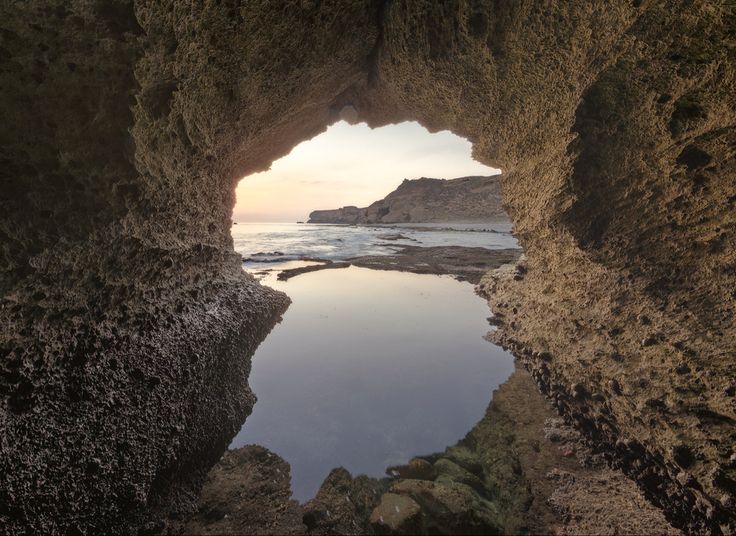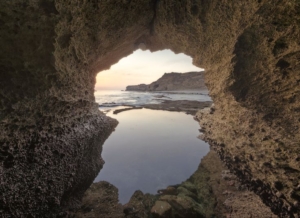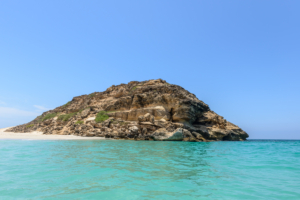

Caves in Salalah: What Tourists Don’t Know About These Natural Wonders
Oman houses the world’s second-largest cave system, yet most tourists only visit the popular caves in Salalah. These natural wonders hide countless treasures that remain unseen by many visitors.
The country’s caves feature remarkable geological formations millions of years old. Marneef Cave stands out as Salalah’s sixth most popular attraction. Its spectacular blowholes create dramatic water displays when waves slam against the ancient cliff faces. These caves hold secrets that extend far beyond the usual tourist spots and viewing platforms.
Let’s take a closer look at these geological marvels’ hidden side. You’ll learn about concealed chambers and unexplored paths. Local wisdom and knowledge will help reshape your cave exploration into something truly special.
The Hidden World of Salalah’s Cave Network
Salalah’s sun-baked surface hides a fascinating network of caves that tell unique stories of geological wonder. The Dhofar region’s numerous caves often have natural springs close by.
Types of caves in the region
Salalah’s limestone caves show amazing diversity. Suhoor Cave stands out because of its natural formations and a narrow corridor that leads to its main chamber. The cave interior sparkles with beautiful columns and stalactites in various shapes, while water drops cling to their surfaces.
Notable caves in the region include:
- Razat Cave – Located 25 kilometers from Salalah, overlooking Ain Razat
- Ittin Cave – Spans 602 square meters in its main chamber and 189 square meters in its smaller section
- Wadi Darbat Caves – Known for natural arches and ancient inscriptions
- Marneef Cave – Features towering ceilings and unique rock patterns

How these caves formed
A fascinating geological process shapes Salalah’s caves. Rainwater becomes naturally acidic by absorbing carbon dioxide and seeps through soil to dissolve limestone along joints and fractures. The region’s geological history adds another layer of interest – ancient seas once covered the Arabian Peninsula and left extensive limestone deposits.
Late Cretaceous and Tertiary limestone make up the bedrock, which tilts gently northward. The caves display remarkable features like delicate white gypsum crystal formations. These crystals are so fragile that a slight breeze can disturb them.
Cave formation continues today and creates underground museums filled with glittering stalactites and stalagmites. Some caves contain underground lakes where rare species of pink blind fish make their home. Karstic features dominate the steep slopes in the gebel’s southern part, and underground dissolution creates many rock shelters and caves.
These natural wonders showcase thousands of years of geological activity. Some caves date back more than 25,000 years. The limestone formations hold rich fossil deposits, including corals and gastropods that tell us about the region’s prehistoric marine environment.
Inside Marneef Cave: Beyond the Tourist View
Marneef Cave sits 40 kilometers from Salalah along the beautiful Dhofar coastline, with stunning views of the Arabian Sea.
Cave structure and features
The name Marneef Cave might be misleading. This massive limestone formation has overhanging structures rather than being a traditional cave. You’ll find it 3 to 4 meters up from the parking area. The site has well-laid-out stairs and a paved ramp that makes it easy for wheelchairs and strollers.
The cave’s unique structure creates an amazing acoustic experience. You can hear the waves crash beneath the overhanging rock with magnified sound. The cave walls tell their own story through intricate patterns that mineral deposits have created over time. Visitors can enjoy comfortable seating areas and walkways, while protective fencing keeps everyone safe near the sea.

The famous blowholes
Al-Mughsayl Blowholes near Marneef Cave are the real showstoppers. These natural wonders feature:
- Three mesh-covered openings in the rock
- Water jets that shoot up to 28 meters high during Khareef season
- Natural fountains that surge through underwater cavities
Each water display comes with its own warning sound, just like air blocks in taps. This builds excitement for the spectacular show ahead. The water displays become even more dramatic during monsoon season as sea levels rise and currents grow stronger.
Hidden chambers tourists rarely see
The main viewing area is just the beginning of what Marneef Cave has to offer. Ancient pottery shards and tools found deep within the cave suggest people once lived here. Some sections of the cave need you to crawl through narrow passages. This gives adventurous visitors a chance to explore beyond the usual tourist spots.
Deep inside, you’ll see stunning stalactites and stalagmites that water droplets have shaped over countless years. These hidden areas are a goldmine for geological study. The fossil-filled walls reveal stories from prehistoric times.
The blowholes have three viewing galleries around them, each offering a different view of the sea and its natural water show. The cave’s true geological and historical importance becomes clear in its less-visited areas, which are the sort of thing I love about this place.
Local Secrets About Cave Visits
Timing is everything for Salalah’s cave adventures. The Khareef season runs from June to September and gives you the best cave experiences. Cave visits change with the seasons:
- Winter (October-March): 20-25°C – perfect for longer visits
- Summer (non-Khareef): 30°C during day, cooling to 20°C at night
- Khareef season: 27°C average with high humidity

Best times for cave exploration
October and April are the sweet spots for cave visits. These months bring comfortable temperatures and fewer tourists. You’ll find better visibility and more pleasant humidity levels during these transition months.
The best photos come from early morning visits, right after sunrise until mid-morning. This schedule helps you dodge the midday heat and catch stunning light and shadow effects at cave entrances.
Lesser-known entry points
Tayq Cave’s path holds one of Salalah’s hidden gems. The trail starts at the parking area. Walk along the sinkhole’s right edge for about an eighth of the way until you find a narrow gap between two boulders. The path takes you through loose rocks and past a unique camel gate with a colored rope-marked branch.
Local guides suggest using four-wheel-drive vehicles to reach remote caves. Oman’s caves remain mostly unmarked and unregulated, giving you a true explorer’s experience.
Ettein Cave sits 10 kilometers from Salalah and has one of the easier entry points. Look for the entrance halfway up a hillside off the main Salalah-Ettein road. Muqal Cave starts as a small side crack in the rock face and leads to hidden underground rivers.
A local guide’s knowledge is a great way to get to these hidden spots safely. They know how to navigate the unmarked terrain. The lack of signs and formal paths keeps these caves pristine and lets adventurers feel like real explorers.
Safety Tips From Local Cave Guides
Safety is the life-blood of cave exploration in Salalah. The unique challenges of underground environments make proper preparation the difference between an exciting adventure and a dangerous attempt.
Essential gear to bring
A helmet provides vital protection for any cave visit. A reliable headlamp becomes your guide underground, and you need backup light sources to avoid getting stranded in darkness.
Your cave exploration kit should include:
- A one-piece, abrasion-resistant oversuit to crawl through passages
- Sturdy boots with quality rubber soles to handle wet, slippery surfaces
- Industrial rubber gloves to manage wet passages
- A waterproof PVC bag with first aid supplies and emergency gear
- A small waist belt pack to store batteries and personal items

Weather considerations
The Khareef season from June to August brings special challenges to cave exploration. Monsoon conditions make surfaces more slippery and raise water levels. Strong winds and powerful waves affect cave accessibility, especially at Marneef Cave.
Winter months from November to February provide drier conditions that work best for physical activities like cave exploration. You should check local weather conditions and tide times before heading out.
Emergency procedures
A reliable emergency plan starts when you tell a trusted contact about your cave visit details and return time. You should also set clear protocols for actions if you don’t return as scheduled.
Local authorities recommend:
- Taking sufficient water and medical supplies
- Working with an experienced guide, especially for complex cave systems
- Staying within designated areas that have protective fencing
- Taking extra care during high tide periods
Underground emergencies require immediate contact with local police or rescue services instead of specialized cave rescue organizations. Your physical fitness plays a vital role in safe cave exploration. It affects how well you direct yourself through challenging terrain and respond to unexpected situations.
Cave Photography: Capturing the Unseen
Taking photos of Salalah’s beautiful caves needs special techniques and the right gear. Cave photography can be tricky because there’s almost no natural light, and the environment can be challenging.
Camera settings for dark caves
The right camera setup can turn shadowy shots into stunning cave images. You should shoot in RAW format to get the most detail in low light. These settings work best in cave environments:
- Your ISO should be between 640 to 2000, based on your camera
- Pick aperture priority mode with your lens’s lowest f-stop
- Keep shutter speeds at 1/25 to 1/30 second for handheld shots
- Manual focus works better since autofocus doesn’t work well in the dark
Your camera’s pop-up flash will create harsh shadows and ruin depth perception. A better choice is an external flash with diffusers to light up specific formations without overwhelming the scene.
Best spots for photos
The cave entrances in Salalah are perfect spots for photos, with amazing light contrasts between outside and inside. Marneef Cave has several great photo spots:
- A main chamber that amplifies wave sounds beautifully
- Platforms with views of bright blue waters
- Spots near the blowholes for dramatic water spray shots
- Perfect sunset views over the horizon
Just like outdoor landscapes, cave photos need good composition. Put your flash away from the camera to create better shadows and cut down fog from water drops. An external flash helps you control exposure and depth of field better.
Your gear needs good protection in caves. These places are usually wet and dirty. The best way to get good shots in groups is to stay at the back while others move ahead. This lets you take your time with composition without slowing everyone down.
Wide-angle lenses between 28mm and 38mm give you more options underground. These lenses are great for big cave interiors and work well with manual focus in dark spots. Handrails can work as makeshift supports if you don’t have a tripod. Take shots while you exhale to keep the camera steady.
Marneef Cave’s blowhole area gives you the best views to capture its size and how it fits into the landscape. The cave creates interesting sound effects that might inspire you to try new photo compositions showing how light and sound interact.

Conclusion
Salalah’s caves showcase nature’s artistry and offer much more than a tourist attraction. These geological wonders have evolved over millions of years and reward adventurous spirits who venture beyond marked pathways and typical viewpoints.
Our exploration of these hidden treasures showed that timing is crucial. The perfect conditions for cave visits occur during October and April, and the Khareef season turns these natural formations into spectacular water displays. Visitors need proper gear, weather awareness, and local guidance to ensure memorable adventures without risks.
Ancient stories emerge from the limestone walls, hidden chambers, and delicate formations of these caves. Each visit promises unique experiences, whether you capture moments through photography or absorb their raw beauty. Knowledge of lesser-known entry points, optimal timing, and proper preparation will help you experience Salalah’s caves’ hidden aspects that most tourists miss.
These natural wonders need our respect and protection. Future generations should enjoy these geological masterpieces just as we do today, so take only photographs and leave only footprints. Venture deep into Oman’s mysterious caves, where every corner hides a new adventure waiting to be discovered book now!
